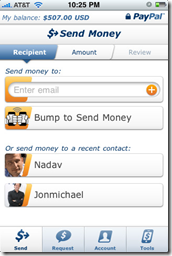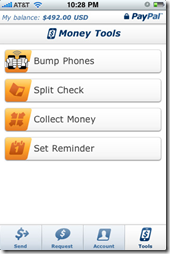 You don’t often see banking and fun in the same sentence. According to Google site search, I’ve used the word fun 58 times in six years of blogging here. It usually appears in a negative sense, for example, when this or that task is “no fun” (see note 1).
You don’t often see banking and fun in the same sentence. According to Google site search, I’ve used the word fun 58 times in six years of blogging here. It usually appears in a negative sense, for example, when this or that task is “no fun” (see note 1).
A guest post in TechCrunch this weekend got me thinking about it. The author, Gabe Zichermann, who’s literally written the book on the subject, led with the provocative statement:
What if everything we did was a little more fun?
He even cited Chase as a large brand trying to add more fun to their offerings. And though he provided no specifics on Chase’s efforts, he did detail his thoughts on how FedEx could use game mechanics to make tracking shipments more enjoyable.
According to Merriam-Webster, fun is:
what provides amusement or enjoyment
By that definition, there is hope that the online and mobile channels are at least making banking tasks relatively more enjoyable than they were pre-Internet.
So how do we make banking more fun?
1. Reduce money worries: Financial stress hits every demographic segment. Is my money safe? Have I paid my bills on time? Do I have enough in my account to last until the next paycheck?
Ideas: Real-time alerts, mobile apps, dashboard controls, red/yellow/green indicators, location-based check-in to authorize a card transaction before you’ve even reached the counter
2. Create mobile magic: The best way to get someone excited about a new channel is to prove that it has new benefits, and it’s mobile’s time to shine.
Ideas: Deposit checks or capture receipts via mobile phone camera, 4-digit login, shake to logout, scan barcode to comparison shop, bump to pay
3. Make it a game: Make financial chores into a game you can win by making good choices (see last week’s post on In and Out Cash).
Ideas: Allow users to keep score against themselves and peers; earn points, honors, badges and discounts for credit-score improvements, savings gains, debt reductions and other measures of financial fitness and goal achievement
4. Keep score: Utility companies provide valuable score-keeping metrics on their monthly statements where at minimum you can see how your energy/water consumption compares to the same period a year ago.
Ideas: It should be easy to see how spending patterns compare to the previous year (a basic PFM function), as well as where your savings stand, how many times you’ve been late with a bill, how your credit score has changed and so on.
Note: There really is a Funbank.com. It’s a kid’s banking/shopping portal that says “patent pending” and “copyright 2003,” so it may not be operational. Many links, including About Us, were broken (29 March 2010)

 Just a quick reminder that the early-bird ticket prices for FinovateSpring 2010 (May 11, San Francisco) will expire at the end of March (less than 2 days from now). If you register by March 31, you’ll save $100 on your ticket and lock in your spot to see debuts and demos of dozens of new financial and banking technological innovations.
Just a quick reminder that the early-bird ticket prices for FinovateSpring 2010 (May 11, San Francisco) will expire at the end of March (less than 2 days from now). If you register by March 31, you’ll save $100 on your ticket and lock in your spot to see debuts and demos of dozens of new financial and banking technological innovations.  Eric Mattson is CEO of Online Financial Innovations, the parent company of NetBanker, Online Banking Report and the Finovate Conference Series. He can be reached at [email protected].
Eric Mattson is CEO of Online Financial Innovations, the parent company of NetBanker, Online Banking Report and the Finovate Conference Series. He can be reached at [email protected]. 

















![clip_image004[4]](http://s3.amazonaws.com/finovate-archive/old/WindowsLiveWriter/CreditKarmaProvidesFreeCreditScorestoSea_118F7/clip_image004%5B4%5D_thumb.jpg)

